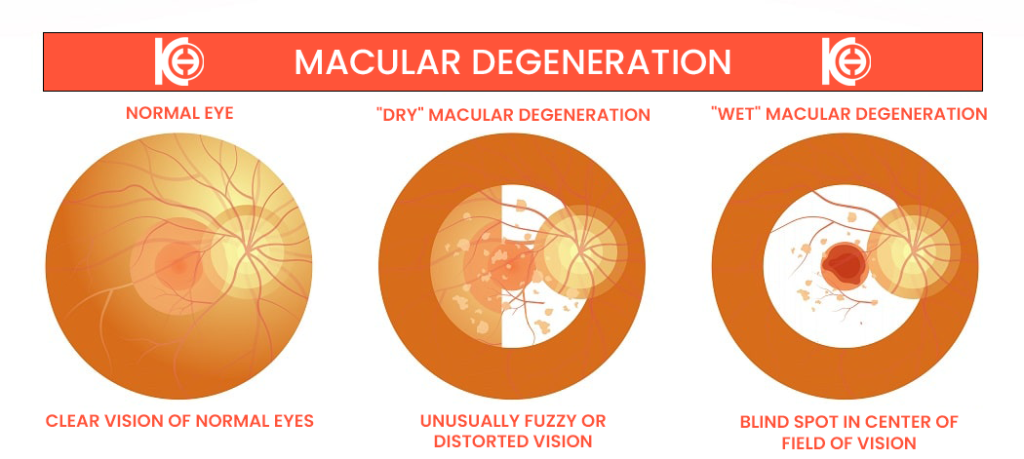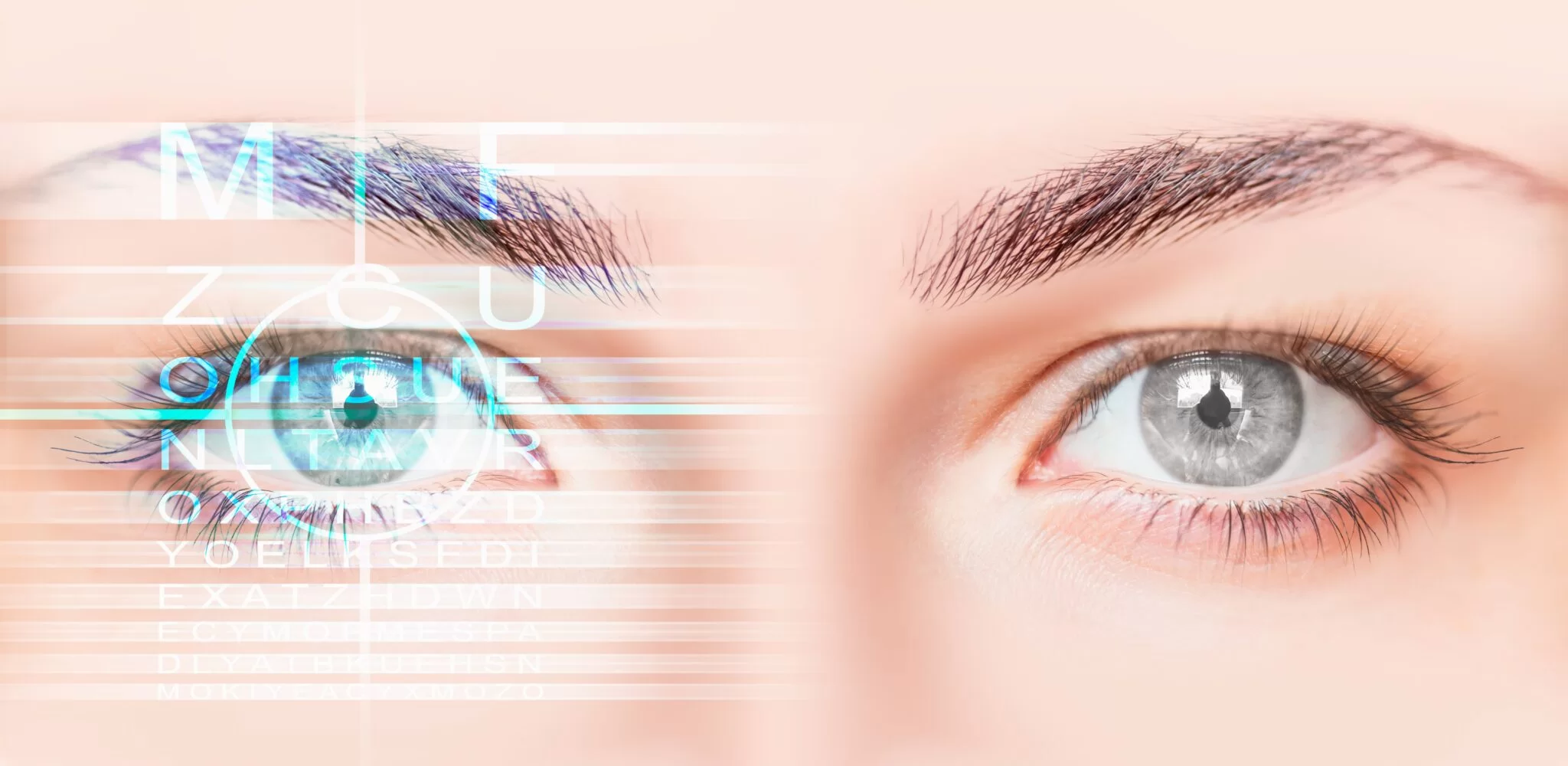QUICK APPOINTMENT FORM

What is Macular Degeneration Disease?
Macular degeneration, also known as yellow dot disease, is characterised by damage to the central area of the retina. This condition affects central vision and usually occurs with age. The disease is divided into two types: dry type and wet type. The dry type is caused by the deterioration of cells in the macular layer, while the wet type is characterised by the formation of new, abnormal vessels, which can lead to leakage and loss of vision.
What are the Causes of Macular Degeneration?
The most important risk factor of macular degeneration is age. If you are over 50 years of age, vision deteriorates with decreased vision, blurred macular vision, difficulty in reading and finally a black spot in the centre of vision. Smoking, exposure to sunlight, ultraviolet rays, light coloured eyes, hyperopia, hypertension, high cholesterol are among the causes of macular degeneration. If left untreated, advanced vision loss occurs, but there is no treatment to improve vision. There are treatment methods to maintain the reduced vision at the current level. Tests such as optical coherence tomography (OCT) and fundus imaging are used for diagnosis.
What are the Types of Macular Degeneration?
It is seen in two forms as dry type and wet type. Most people have the dry or atrophic form, which causes the light-sensitive cells in the macula to decay and the retinal tissues to thin. Symptoms of dry macular degeneration may initially affect only one eye. There is a blurring of vision, especially in the centre, with a gradual loss of vision. Dry, blurred vision, difficulty in recognising faces or reading are among the first symptoms. The other eye may also be affected. As the disease progresses, a black spot may form in the centre of the visual field. Over time, this area expands and interferes with vision. However, a person with macular degeneration in one eye may not realise the loss of vision because they can see very well with the other healthy eye. The wet type of yellow spot develops faster than the dry type. People with macular degeneration do not completely lose their vision; their ability to see from the edge continues.

What are the Treatment Methods of Macular Degeneration?
The treatment method varies according to the type of yellow spot disease. Accordingly, preventive treatment, intraocular injection therapy and photodynamic therapy can be applied. Macular degeneration can be diagnosed by eye tests. Colour tests can also be performed to see how well the cone cells in the retina are working.
Your doctor may suspect a dry macular degeneration if he or she sees small clumps of yellow deposits forming under the macula, or if he or she sees pigment fragments during a fundus examination. The use of the Amsler Grid diagram is the most important part of the examination. This diagram determines the vision impaired by macular degeneration. You will be asked to look at a dot in the centre of a grid that looks like a grid. If you see wavy lines, you may have yellow spot disease. With wet yellow spot disease, the vessels leaking into the retina are diagnosed with the help of angiography.
There is no proven treatment for dry macular degeneration disease. However, this disease progresses very slowly and although there is a loss of central vision, the patients manage with their daily routine.
Treatment options for wet macular degeneration disease include intravitreal injections and laser. Your doctor may recommend that you monitor your own condition at home, using the Amsler Grid diagram. Regular check-ups will help you to recognise if your condition is getting worse.
Wet macular degeneration disease is more serious and is the result of abnormal blood vessels developing in the vascular layer beneath the retina and extending into the macula. These new vessels tend to leak fluid and blood, which can damage tissue cells. The result is loss of vision and internal scars.
Visual impairment is the earliest sign of wet type yellow spot disease. Straight lines appear wavy and shapes may be distorted. Colours may become dull and a blind spot may appear in the centre of the focusing area.
How Do Patients with Macular Degeneration See?
Macular degeneration affects especially central vision due to deterioration in the macula region in the centre of the retina. Patients see a blurred or dark spot in the centre of the object they are looking at, making it difficult to make out details. This makes daily activities such as reading, face recognition and distinguishing fine details difficult. As macular degeneration progresses, the ability to distinguish colours may also decrease. Peripheral (peripheral) vision is usually preserved for longer, so that patients can see movements from the sides.

Is Macular Degeneration Contagious? Can it be passed to other people?
Macular degeneration is not contagious and cannot be passed to other people. The disease usually develops with age and is associated with various risk factors.
What to Expect After Macular Degeneration Operation?
Although it is usually a painless procedure during the operation, some people may feel mild discomfort. After the operation, the eye may take a few days to heal and vision may be blurred for a while. However, the healing process is usually fast and normal activities can be returned within a few weeks.
How Much Is Macular Degeneration Treatment Price?
Macular degeneration disease treatment prices vary depending on the underlying cause and the operation to be performed. The treatment plan to be created by our specialist ophthalmologist depending on the detailed examination results may vary from person to person.
Please click here for appointment and price information .
The above information is for informational purposes. If you have any medical concerns or questions, please make an appointment with our ophthalmologists.




















